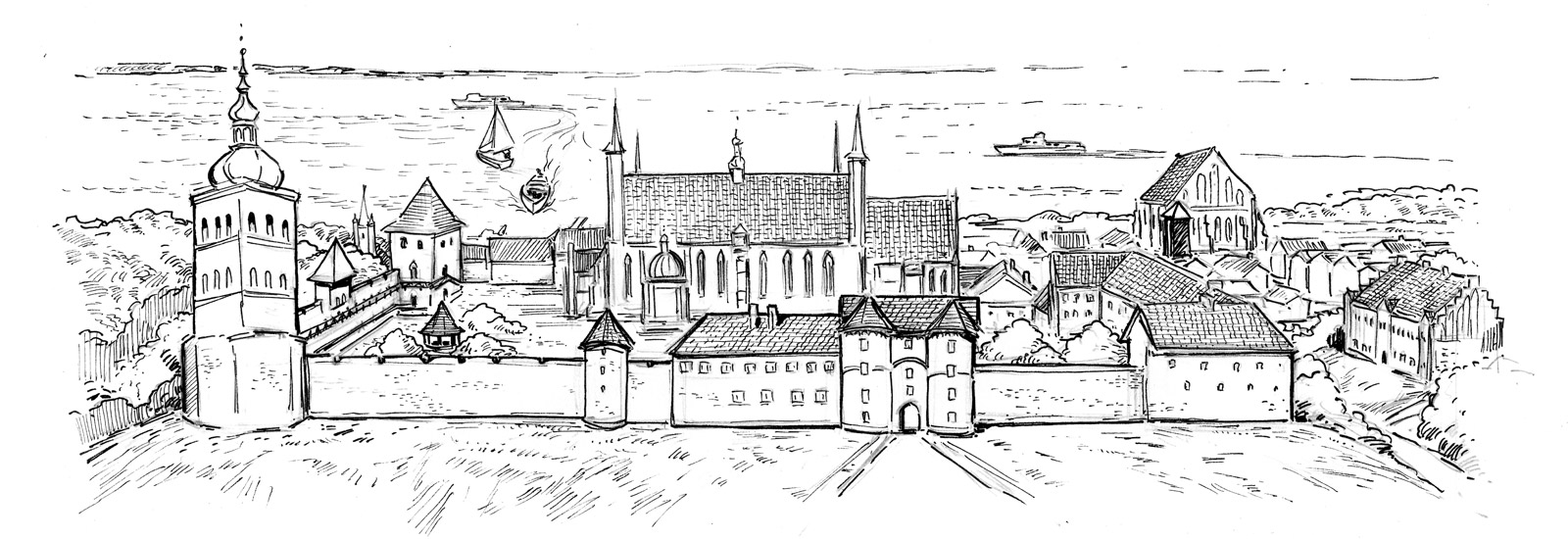Frombork
Copernicus came to this town for the first time in July 1501 to officially accept the dignity of a Warmian canon. Then he lived here from the end of 1510 for the rest of his life (with breaks for his stay in Olsztyn and other shorter trips).
On the Cathedral Hill in Frombork, the scholar bought a tower, still known as the Copernicus Tower. He acquired canonies outside the walls of the complex. In his garden, he set up a place for observing the sky (so-called pavimentum), whose traces have not been found so far. He used these observations to work on the reform of the Julian calendar and of course, when writing the following chapters of his life's work "On Revolutions.". He was invited to work on the reform of the Julian calendar by the participants of the Lateran Council in 1513.
Unfortunately, the author did not wait to publish it in print. He died after illness in May 1543. He was buried in the cathedral in Frombork. After finding and identifying the remains of the astronomer, they were reburied in the same place in 2010.
Frombork obtained city rights in 1310. It was and still is the seat of the Warmian chapter, and in the years 1795-1945 he also served as the episcopal capital. The polonized name Frauenburg (Lady's Castle) refers to the Virgin Mary, the patron of the temple located on the Cathedral Hill. Apart from this complex, other Gothic buildings have survived: the hospital of St. Spirit, Water Tower, former church of St. Nicholas. Other monuments are: canons from the 17th-19th century and the episcopal palace from the 19th century.
Cathedral Hill is the only well-preserved medieval cathedral fortress in the world. It is dominated by the gothic Archcathedral of the Assumption of the Blessed Virgin Mary and St. Andrew the Apostle, erected in the years 1329-88. It is the largest church of Warmia - a threenave, hall type of building nearly 100 m long and over 16 m high. Its current interior is mainly baroque. Attention is drawn to richly decorated organs from the 17th century.
Other Cathedral Hall buildings - the episcopal palace, custody, curia and vicariate buildings, the Copernicus Tower - were also built mainly in the 14th century. Later, the Radziejowski Tower was built (17th century).
Currently, the Nicolaus Copernicus Museum operates in the complex [http://frombork.art.pl/pl/], introducing the astronomer, his work, and his times, as well as the Museum of the Historical Monument Frombork Cathedral Complex [http://muzeum.frombork.pl/] which, among others gives an opportunity for tourists to visit the cathedral. As part of the first facility, there are: a planetarium in the Radziejowski Tower and an Astronomical Park with an observatory on Góra Żurawia, about 2 km from Frombork. In the hospital of St. Spirit, the department of the history of medicine of this museum was organized.
At the foot of the Cathedral Hill, in 1973 a monument of Copernicus was erected. The bronze figure is 6 m high and stands on a granite pedestal (3 m). The author of the monument is Mieczysław Welter.
